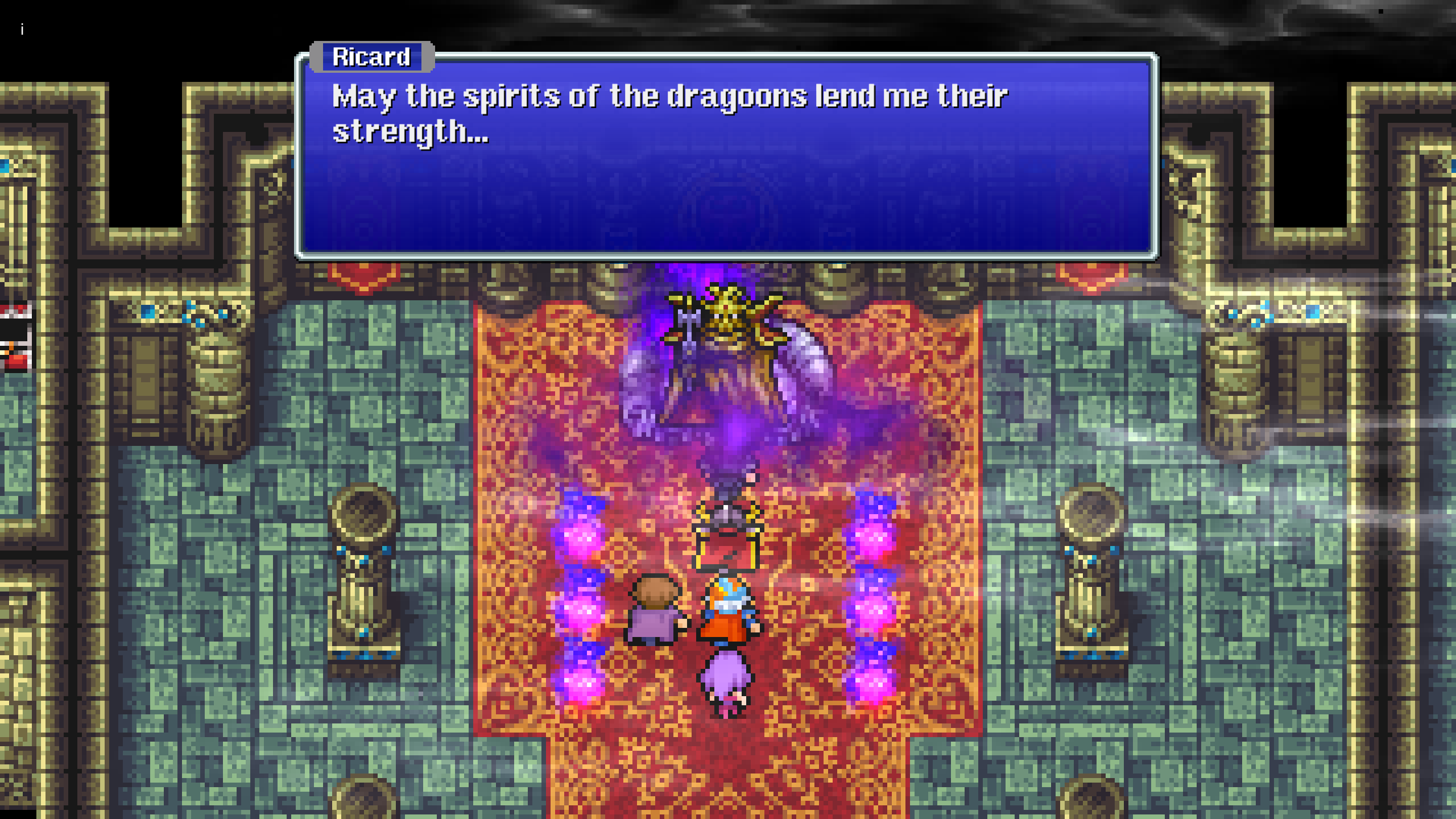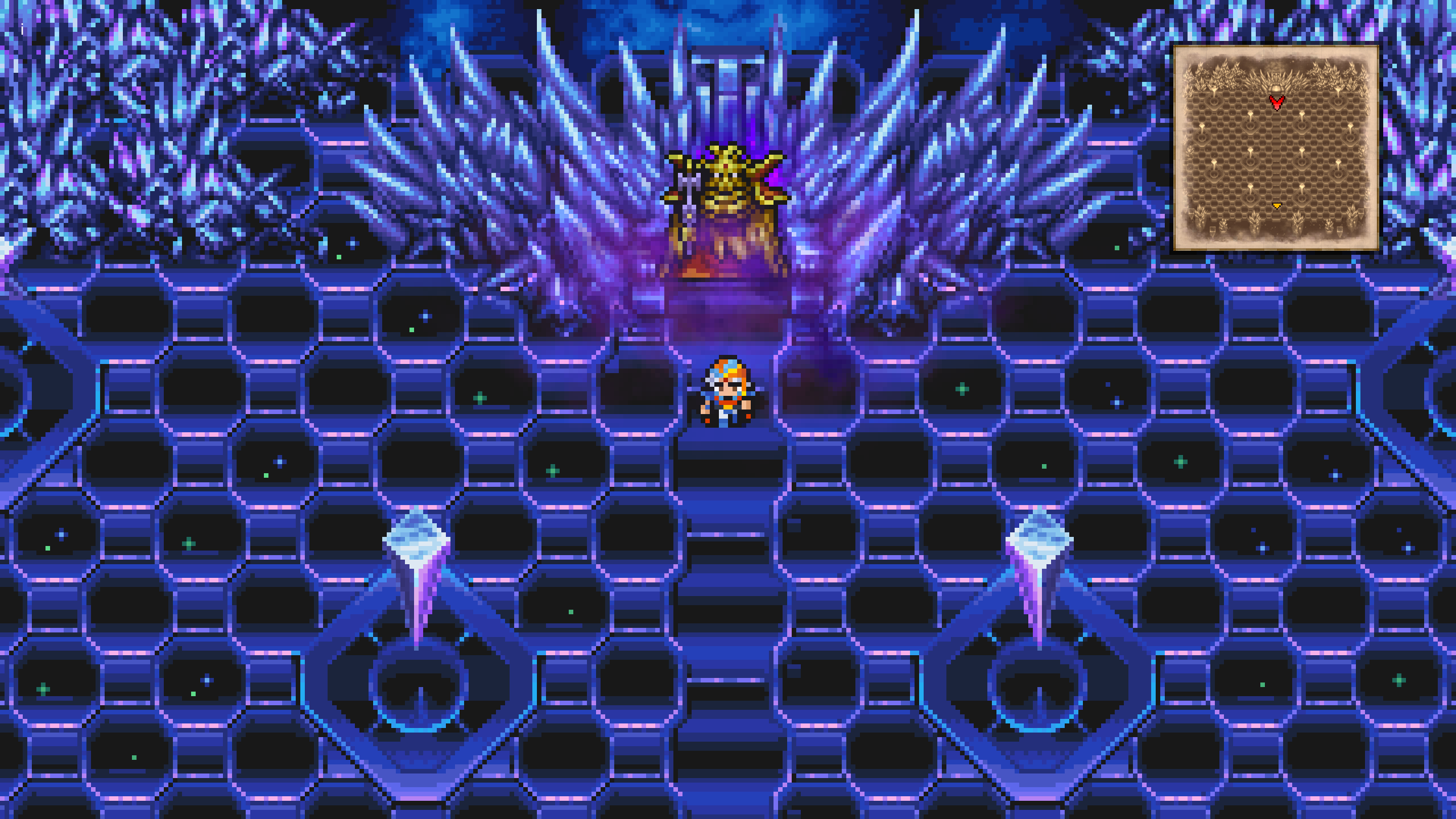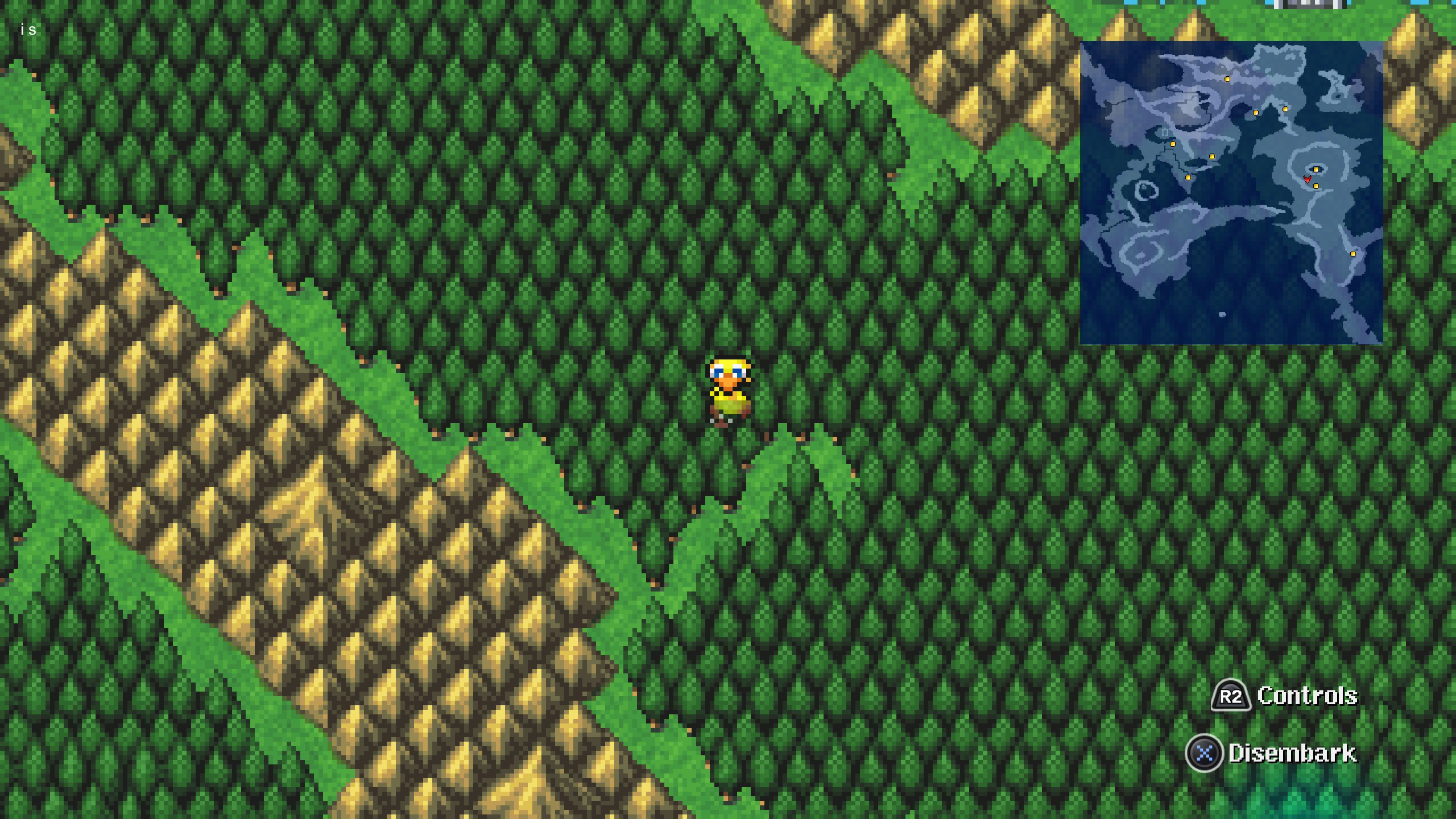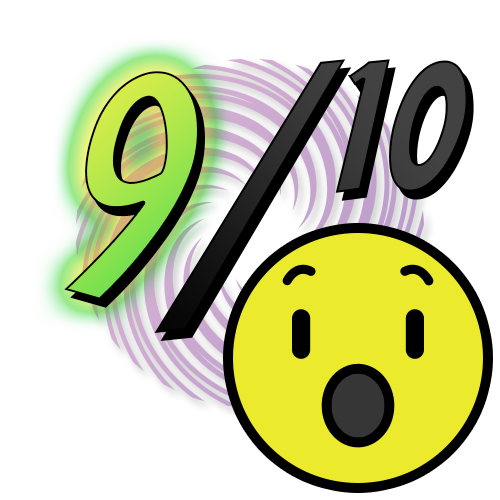| Title | Platform/Version | Time to Beat | Achiev % |
|---|---|---|---|
| Final Fantasy II | PC (Pixel Remaster) | 13 Hours | 100% |
| Used Modifications: – Pixel Text Replacement – Playstation Button Replacement – 2x Speed modification (to assist in mindless grinding) |
Intro – 2Final2Fantasy
Final Fantasy II was originally released in 1988 to Japan only, with an international release not occurring until 2003’s Final Fantasy Origins compilation on the Sony PlayStation. The game was developed immediately following the success of the first entry in the series, and while only a single year had passed, the game not only featured a completely revamped progression system, but also featured an actual storyline with significant plot points, character arcs, and speaking player characters.
While Final Fantasy II did improve on many, many aspects of the original, it’s also a great example of just how experimental the early NES days were. This was not a game made by a money-hungry developer designing its systems to take the least risks and capitalize on the player. No, Final Fantasy II instead became a cautionary tale of sometimes following a vision too strongly, taking too many risks, and the danger in knee-jerk reacting to initial concerns. Essentially, it’s the perfect “sophomore” album, wherein it had big shoes to fill but also struggled mightily to be fresh and new all at once.
The Story
So first of all, huzzah that there even WAS a proper story! I’d like to preface that while I did own Final Fantasy Origins when it was released in 2003, I actually bounced off of this title back then due to it’s… questionable design decisions. But I’ll get to those down below in the gameplay section, instead I just wanted to say that over my 13 hour playthrough of the Pixel Remaster this weekend, this was my first time actually playing through the story of the game. Additionally, I had largely avoided spoilers somehow over all these years, so the plots twists and turns (while following standard tropes and established fantasy beats) were largely a delight for me.
Firstly, the game begins “in media res”, as we are thrown into state of the world. The free kingdom of Flynn is conquered by an invading Empire in an opening cutscene that is full of action, and we are introduced to our four lead NAMED characters, a ragtag group of young adults escaping the carnage of the falling city.
The Final Fantasy series allowed you to rename your heroes all the way through FFX(!). However, from here on out, wherever appropriate, I will be using the default names of the characters. In the case of FFII, Firion, Maria, Guy, and Leon.
You are thrust into combat against knights of the evil empire pursuing your escape, and for the first time in the series, we have a scripted combat encounter where you are designed to lose. Firion, Maria, and Guy wake up after being rescued by the rebellion led by the previous king and princess of Flynn. Leon is nowhere to be found and things are looking bad.
The first act of the game follows our three main characters as they attempt to join the rebellion despite their young age and lack of experience. Firion, Maria, and Guy feel a deep need to avenge Leon and free everyone from the evil empire’s firm grip, and after completing some small missions to sneak into the captured city and procure some legendary mithril with which the rebels can make proper gear, the party is formally welcomed into the rebel ranks.
The story involves many acts of espionage, political intrigue, and sacrifice as the party gets more and more caught up in the machinations of both sides of the conflict. The fourth party member slot is filled by a rotating cast of characters that all belong to the world, from a reclusive monk trying to take care of his child, to a cowardly prince ashamed for failing his kingdom, to a pirate queen who wants to take the fight to the empire. Every character has evocative sprites that are beautifully crafted to give them all the personality and flair possible in 16 bits.
The third act of the game pivots into more traditional fantasy-style dungeon delving and artifact hunting, but it’s all in service of the main plot: killing the evil emperor and putting his reign of terror to an end. The fourth act, as expected, escalates things to an extreme after the emperor’s eventual death at your hands ends up being a mere setback, as he literally RETURNS FROM HELL to finally finish the job of conquering the world. It’s so ridiculous, particularly following the relatively intimate and character-driven political intrigue of the first half of the game, but it somehow works and is delightful the entire time.
Final Fantasy, as a series, has a very unique voice, one that is very much “more than the sum of its parts”. While the series often borrows heavily from real world philosophy, religion, and mythology, it is always presented with a unique spin, then woven into a peculiar tapestry that incorporates the varied mismatched puzzle pieces and tropes until it resembles something new and glorious. While FFI had a fourth act escalation as well, its lack of meaty story, character arcs, and established identity meant that the fourth act just felt tonally off. But starting with FFII, the absurdity somehow works, and it became the blueprint of what a Final Fantasy story shape looks like. Warts and all.
Just as a final note, I want to clarify that while I enjoyed FFII’s story, and I’m currently riding a high of how much more there was vs the first game, let me be absolutely clear that the storytelling is still largely sparse. It’s more of a statement of just how baren FFI was that this feels so meaty in comparison. Truly, FFII is a game that wanted to do more but often “more” just wasn’t enough. Important plot points always resolve in one or two sentences, and character deaths are always ho-hum at best. It’s a great first step, but Square was clearly experiencing some growing pains.

The Gameplay
Alright, this is where things go off the rails. There are two main pillars to the Final Fantasy II design:
- The “Password” System, a process by which the storytelling of the game uses adventure-style game mechanics of mixing and matching keywords and key items.
- The lack of a level-up system.
Gameplay – Password System
I’ll start with the positives. The “Password” system, largely, is an experiment that worked for me. Largely. Sort of. So, the way it works, is that when talking with an NPC, there may be words written in red text. Those words can be “learned”, adding them to your known topics. Then, you can ask other important NPCs about any of the topics you learned. Additionally, FFII elevates the “key item” inventory into this system, so you can also show key items to any NPC to get their thoughts. As I mentioned above, the intent of this system is to incorporate adventure-game style interactions, where oftentimes the next stage of the story is simply locked behind combining the right item with the right npc to get their reaction. Considering that this game came out the year after LucasArts’ Maniac Mansion means that this was likely a combined attempt at incorporating some of this style of gameplay along with acknowledging the faults with FFI’s lack of engagement with the story.
So, what went wrong, and why wasn’t this system used in any of the following the games? Well, first and foremost, I think it’s important to just acknowledge that a JRPG is not an adventure game. Adventure games are often very broad, with a sandbox-like approach to letting the player explore the world and experiment. JRPGs on the other hand are about the curated storytelling experience and need some element of linearity in the storytelling. Obviously, neither genre is black and white, and there is always room for exploring new ideas, but at its core, a system like this just isn’t practical for a JRPG. What is presented as a way to learn about the world and get creative is instead simply an obfuscation of the fact that there is only ever one correct path forward. In practice, you just end up spamming every keyword and key item on every NPC until you trip over the correct interaction that finally progresses the story.
And I hear you thinking, “well, they could have fixed that by adding side branches, alternate storylines, etc etc” and yeah, they could have. But to add more depth to this system would have required distributing resources even wider on a game that was struggling as it was to wrangle the tone and pacing of its story. The game was already very “wide” and we needed to instead get “deeper”, and enhancing this system would have only made it wider.
Again, it was interesting, and I didn’t hate it, but it just wasn’t the right fit for the genre and the story they were trying to tell, and it’s clear that they realized this as well by never going back to this style of storytelling.

Gameplay – Progression System
And now the negatives. I did not enjoy the progression system of this game. I didn’t enjoy it in 2003 (it’s the reason I never got more than an hour or two into the game back then) and I sure as hell didn’t enjoy it now. Here’s the gist of it: The battle system is almost exactly the same as Final Fantasy I’s, with the same initiative style combat, marching order, lack of special skills outside of Magic, etc. But behind the scenes, your characters progression was ENTIRELY different.
Instead of “leveling up”, your characters instead are a blank canvas, and they simply improve at whatever it is that they do. And let me get this out of the way out front… on paper this is FUCKING RAD. Like seriously, typing this up, I can’t believe I dislike this system so much because on paper it makes a ton of sense AND it sounds like it would give you a lot of agency (something that FF1 lacked greatly). I’m sure that there are people out there that will disagree with my opinions on this, and I’d be hard pressed to try to change their mind because again I do think it’s cool.
But cool does not always mean good. Particularly in a game where you spend so much time battling enemies in random encounters, it’s imperative that your progression system clicks.
The way the FFII progression system is designed, based on the activities you do in combat, you’ll get miniscule permanent upgrades after the fight. Want to raise your strength? Attack with a weapon. Want to increase your intellect? Use a spell. Want more MP? Purposefully exhaust your MP during a battle.
if you want one of your characters to be tanky, then you equip armor on them, a shield, and have them go into combat and purposefully take damage. If you want an archer, equip a bow and have them start shooting.
Okay again, it sounds awesome on paper.
Here’s the issue(s). First, while it makes sense that someone who practices attacking all the time would get better at attacking, it makes a little less sense why you need to GET hit to raise your hp. Like, there’s some inherent obtuseness here that you just have to accept as videogamey. But it gets worse. My second biggest issue is that the best way to play the game is to LEAN INTO the videogamey element of the combat. What I mean by this is that because you have ultimate control over how your character will develop as long as they do VERY SPECIFIC things, then you are rewarded for doing exactly those specific things. So, my above example about making a tank wasn’t exactly accurate. That’s one way to make a “decent” tank. But if you want a great tank?
- You want a tank with max HP?
- Go to a part of the game with easy enemies. Then, purposefully don’t kill the enemies, instead, have your other party members ATTACK the tanky one. The lower you get their hp the better their permanent hp will improve at the end of the battle. Then cure them up until you are out of MP and then finally kill off the enemies.
- Okay, so your tank has Max HP. But that’s not good enough, they should also dodge 99% of all attacks!
- Well that’s easy! You equip them with TWO SHIELDS (yes, one in both hands) which boosts their evade into the stratosphere. Sure, their attack damage will be low, but that’s fine, they are practically unhittable (and have enormous hp when they DO get hit). Then, you go to a combat against harder enemies, and have your party just defend every action, only healing when necessary. Grind that way for a few hours and your tank will be so agile with 99% evasion that you can then equip STUPIDLY STRONG weapons and armor to them, and they still have the evasion as if they had the shields equipped.
- Alright, so we have one big tank that can’t be killed and hits like a truck. But what about my DPSERS?
- I mean sure, lets say you don’t want to be boring and make everyone into an unhittable, unkillable tank, you just do similar things for each of them. Want a great mage and healer? Cast your strongest spell on repeat on your own party, and have your healer just follow up with cure every round. Do this until you are out of MP, finish the enemies, get massive increases to intelligence and cure potency on your healer, and then spend the night in an inn.
“Okay, okay! Corey, I get it.” I hear you saying to yourself as you question why you are reading this giant blog entry about an ancient game.
But there’s more. Outside of the obtuseness and videogameyness of the progression system, there’s also a psychological issue with the lack of a level-up system. Primarily, it’s hard to gauge if you are ahead of the curve or behind the curve. Say what you will about a level 1-99 “level up” system, however it stands to reason that when you reach a plateau in leveling, it usually means your team is at the appropriate level for the place in the story you are at. Conversely, you know when you start getting into the 50’s, 60’s and 70’s, you know you are nearing the end of the game. It’s a great way that the system helps inform the narrative pacing, and vice versa.
In FFII, you have ZERO barometer. You have no way of knowing if you have too much HP and are going to trivialize the next area, or if you have too little and are risking getting destroyed by a boss. There’s not a clear indicator on how to compare your characters with the enemies you are fighting other than just “feeling out” how the battles are going. It’s entirely possible your HP is WAY too low, but your other stats are incredibly over leveled, and you’ll still breeze through an area. Conversely, you could have max hp but crap damage and have issues with enemies who heal themselves or inflict status effects on you that you can’t outpace.
It’s just icky. Now, I will say that this system didn’t DIE with this game, it’s in fact how most of the SaGa games work, and SaGa Frontier II is one of my favorite games of all time, so I’m not saying it’s not possible to do it right. A variation of it was also used for Secret of Mana (the more you use a weapon/magic school, the better you get with it) and that game is a bona fide masterpiece. But in this game, with this implementation, with this story, it was just a mess.
So, the way I played, I ended up over grinding and trivializing all the content out of an overwhelming concern for caution. But this was in response to getting my ass handed to me by some random encounters early on, and I didn’t know what to expect. I weep for this implementation and because of it, despite enjoying the story, I just cannot recommend this game to others. Square took some risks here, and they just didn’t work.
Extras & Achievements
Similar to FFI, this version of FFII lacks any specifically designed post-game content. Additionally, the scope of the “optional” content is almost identical to the first game as well.
- Getting Excalibur: This time there is no “quest” to do so, you simply just talk to an NPC and mention a certain password using the game’s keyword system. That’s it. Also, it’s not even the strongest weapon in the game! The Muramasa is found in the final dungeon in a not-so-hidden hidden room and it outclasses the Excalibur by something like 40%. It’s insane.
- Fighting
WarmechIron Giant: Iron Giant is very similar to Warmech, it is a rarely spawning random encounter in the final dungeon that has a very difficult fight associated with it. However, due to the design differences between the games, Iron Giant was a complete pushover for my late-game team and didn’t pose a threat at all. Truly the hardest part was finding him (required for the bestiary achievement) which took me about 45 minutes of grinding out random encounters on 2x speed in the final dungeon.
As far as achievements go, this game had me sweating as there is a point in the game where several monsters become no longer available to fight, and if even a single monster is missing from your bestiary at the end of the game, you miss the achievement and would need to do another complete playthrough to get it. I was carrying multiple saves at multiple points to protect against this possibility. Additionally, the “open every chest” achievement is always nerve racking, with a few chests being hidden behind sneaky “false walls” or being locked behind locations that you are only allowed to visit ONCE. Luckily the game allows you to check your chest completion in a location in-game, so this was more about just being exhaustive and patient than true difficulty.
Lastly, there is an achievement for grinding a spell and a weapon to “max”, which added about 2 hours of time alone to my run. In hindsight, I wish I had grinded out these while I was grinding for the above-mentioned Iron Giant spawn, I could have overlapped some of the time spent. That being said, a total of about 3 hours of grinding to get 100% achievements on a title is pretty tame and pales in comparison to some of the later trials I’ll have in FF7-13.

Final Fantasy Staples Introduced
(Please note that this is not supposed to be an exhaustive list, just those things that I personally noticed and took note of during my playthrough)
- First appearance of talking main characters
- First appearance of the Job: Dragoon (and a neat easter egg referring to a dragoon named Kain)
- First Scripted unbeatable battle
- First time that there were more than 4 possible party members
- First party member character death (and dear lord are there many of them)
- First appearance of Chocobos!! <3 <3 <3
- First appearance of staple magic:
- Flare
- Holy
- Ultima
- Stop
- First appearance of staple songs:
- Chocobo Theme (Although abbreviated)
- FFII Battle Theme (Widely considered one of the best in the entire series, and remixed multiple times/referenced in other games)
- First appearance of staple monsters:
- Adamantoise
- Antlion
- Behemoth (!!!)
- Bomb (!!!)
- Flan (!!!)
- Gigantoad
- Hecteyes
- Iron Giant (!!!)
- Malboro (!!!)
Final Thoughts & Score
I’m giving it one more point than FFI simply because I enjoyed the story and I REALLY liked the characters. But the battle system was a huge miss for me, and a few questionable design decisions causing spikes in difficulty to be so uneven just left a sour taste in my mouth. This was painful to get through and I was very happy to be done with the game. Knowing that I 100%’d this game and can finally put it to rest in my catalogue is an incredible relief. Now bring on FFIII which I cannot wait for!






































Leave a Reply